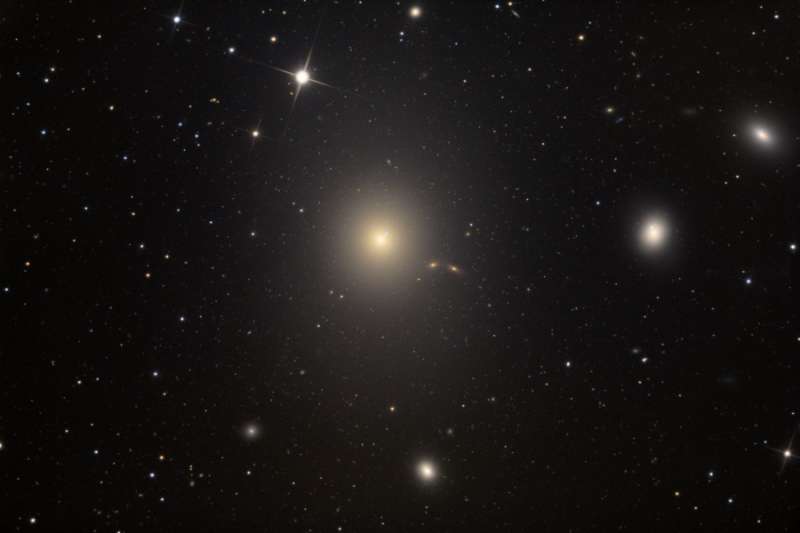Explanation: In spiral galaxies, majestic winding arms of young stars, gas, and dust rotate in a flat disk around a bulging galactic nucleus. But elliptical galaxies seem to be simpler. Lacking gas and dust to form new stars, their randomly swarming older stars, give them an ellipsoidal (egg-like) shape. Still, elliptical galaxies can be very large. Centered in this telescopic view and over 120,000 light-years in diameter, larger than our own Milky Way, elliptical galaxy M87 (NGC 4486) is the dominant galaxy of the Virgo Galaxy Cluster. Some 50 million light-years away, M87 is likely home to a supermassive black hole responsible for a high-energy jet of particles emerging from the giant galaxy's central region. In this well-processed image, M87's jet is near the one o'clock position. Other galaxies are also in the field of view, including large Virgo Cluster ellipticals NGC 4478 right of center and NGC 4476 near the right edge.
1999 2000 2001 2002 2003 2004 2005 2006 2007 2008 2009 2010 2011 2012 2013 2014 2015 2016 2017 2018 2019 2020 2021 2022 2023 2024 2025 |
Yanvar' Fevral' Mart Aprel' Mai Iyun' Iyul' Avgust Sentyabr' Oktyabr' Noyabr' Dekabr' |
NASA Web Site Statements, Warnings, and Disclaimers
NASA Official: Jay Norris. Specific rights apply.
A service of: LHEA at NASA / GSFC
& Michigan Tech. U.
|
Publikacii s klyuchevymi slovami:
ellipticheskaya galaktika - Skoplenie galaktik - dzhet - jet - Elliptical Galaxy - Virgo Cluster
Publikacii so slovami: ellipticheskaya galaktika - Skoplenie galaktik - dzhet - jet - Elliptical Galaxy - Virgo Cluster | |
Sm. takzhe:
Vse publikacii na tu zhe temu >> | |
